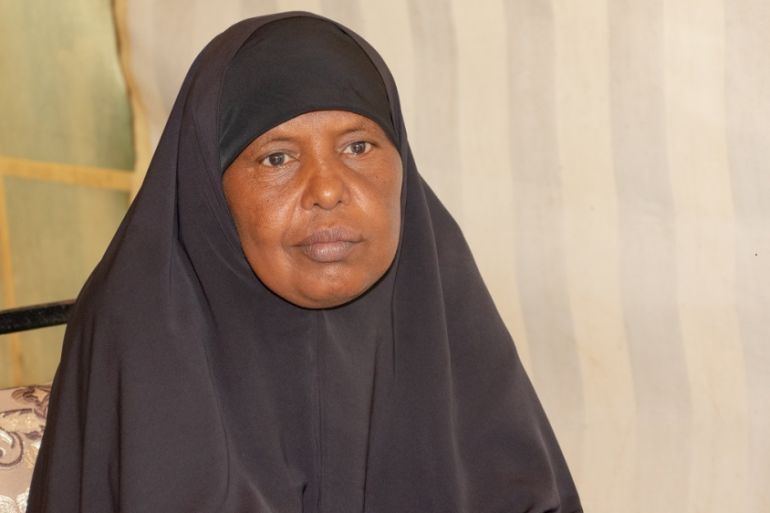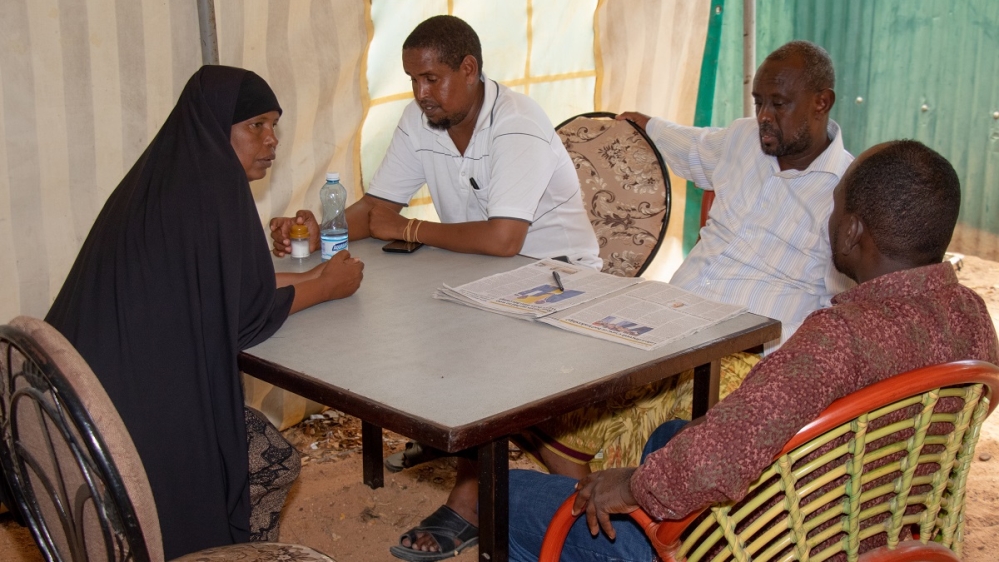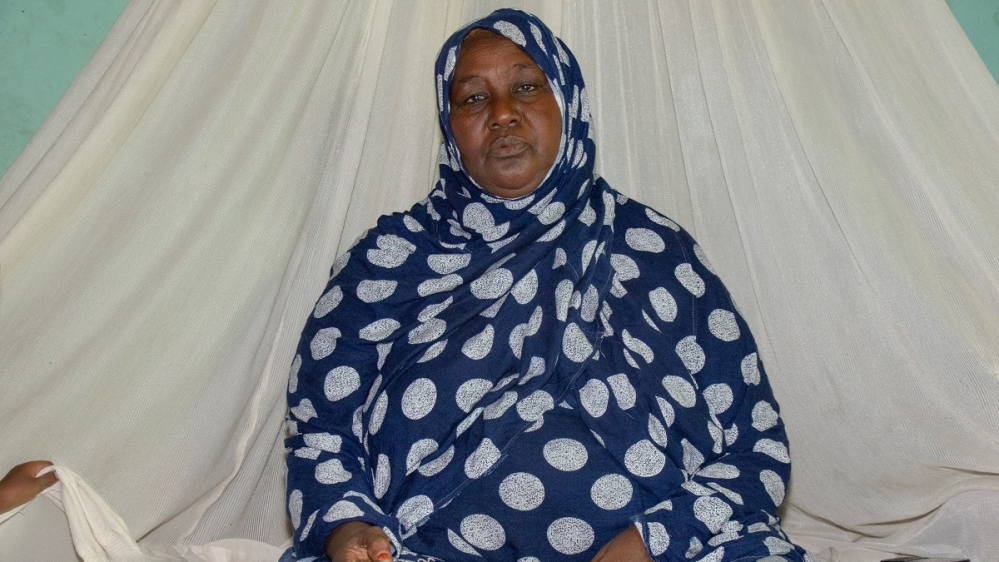Victims of al-Shabab school attacks share their stories
Al-Shabab attacks on Kenyan schools have bred fear among teachers, parents and pupils.

Garissa County, Kenya – “I heard the gunshots at 2am on January 7, a day after schools opened for the new academic year,” says Safiyo Ali, 50, the headteacher of a primary school close to Kenya’s porous border with Somalia.
Saretho Primary School had 250 pupils and 10 teachers, nine of whom were from other parts of Kenya. About 200 boys and girls were sleeping in the school when it was attacked.
Keep reading
list of 4 itemsAl-Shabab claims attack on UAE military in Somalia
Somalia begins ‘efforts to rescue’ UN helicopter crew held by al-Shabab
Al-Shabab captures UN helicopter in central Somalia
Four pupils, three of whom were siblings, and one teacher were killed.
The other teachers have since fled the area and the school has been temporarily closed.
No one has claimed responsibility for the attack, but the Kenyan government has accused the armed Somali group al-Shabab.
Police reports state that the attack was carried out by about a dozen fighters from the group, which has been fighting for more than 10 years to overthrow successive internationally-backed Somali governments.
In a quiet local restaurant, Safiyo, the only remaining teacher at Saretho Primary School, gathers with other local teachers whose schools have also been closed out of fear of further attacks.
She recalls the events of that night. “I went under my bed with three pupils and stayed there until morning when the police arrived,” she says. Her rheumy eyes drift over a photo of a pupil who was killed.
“I paid for his school fees because his parents could not afford it,” she says as tears form in the corner of her eyes. “He loved me like his mother.”
Safiyo says she has recurring nightmares about that night, but that the government has not provided any counselling services. “The only thing the government gave me is commissioned leave for two weeks.
“We were 10 teachers in my school and I was the only local. The rest have gone back to their home counties.”
Garissa is an arid and remote region with a largely Muslim, ethnic-Somali population. Many Kenyans from other parts of the country, who are often non-Muslims, come here to work as teachers and civil servants or to take up positions with non-governmental organisations (NGOs).
The county lags behind in education, with two-thirds of primary-aged children dropping out of school, according to the NGO Womankind Kenya.
The state depends heavily on teachers from other parts of the country, who make up more than 90 percent of the teaching fraternity in Garissa, according to a report by the Kenyan government.

‘We all die the same’
On January 13, a few days after the attack on Saretho Primary School, armed men, also thought to be al-Shabab fighters, although no group has claimed responsibility, struck the sleepy village of Kamuthe, in the Fafi sub-county of Garissa, about 35km (22 miles) from Saretho.
They rounded up civil servants – six teachers and a nurse – who were not from the area. They executed three of the men but let one man and the three women go.
“I am not going back there,” says 37-year-old Lucy Wanjira, one of the female teachers rounded up in that attack. “This is not the first time al-Shabab has attacked us. Since 2015 they have been killing us non-Muslims with no protection from the police,” she adds, wiping tears from her face.
Memories are still fresh in her mind, she says, of the day in April 2015 when al-Shabab fighters stormed Garissa University College, killing 148 people, including 142 students. She was not at the university that day, but she was living in Garissa town at the time.
Fatuma Mohamed, 55, an ethnic-Somali Kenyan, sits on the edge of her bed on a hot Sunday afternoon counting her prayer beads as she mumbles a prayer. Her son was killed in the attack on Saretho Primary School.
“I sent my son to school on Monday morning with a brand new uniform and books. He was very happy. They killed him a day later,” she says.
“In 2012, I lost another son to al-Shabab. He was working for a Norwegian NGO.” Fatuma’s son was killed during the kidnapping of four aid workers with the Norwegian Refugee Council. The workers were later rescued by the Somali Ras Kamboni armed group.
“To be honest, there is no government to protect our children,” says Fatuma. “Whether local or non-local we all die the same.”
Since December, al-Shabab fighters have stepped up attacks in counties bordering Somalia. In the last six weeks, they have carried out more than 10 attacks, which have killed at least 25 people.
In early December, 10 people were killed when al-Shabab fighters attacked a bus travelling between the towns of Wajir and Mandera in northeast Kenya, outside Garissa county. Eight police officers and two non-local teachers were among those killed in that attack.
Abdikadir Osman, a parliamentary representative for Fafi in Garissa county, has called for the government to arm local community leaders so that they can defend themselves from al-Shabab.

Spreading fear
While hundreds of teachers and other civil servants of non-ethnic Somali descent have fled to safer areas of Kenya and others continue to do so, Mary John*, a non-local teacher, says she is not leaving her school in Dadaab, Garissa county.
“When students aren’t around here there’s panic. You can’t sleep well at night but I’m paid better here and I love my job so I will not leave,” she explains.
Kenya sent troops into Somalia to fight al-Shabab in 2011. Since then, the group has regularly struck targets inside Kenya. Between 2013 and 2017, there were almost a dozen al-Shabab attacks on Kenyan schools.
In 2018, 224 primary and 42 secondary schools were closed in Wajir county, which neighbours Garissa county, after two non-local teachers were killed in al-Shabab attacks. Nearly 1,000 teachers fled the area.
Ahmed Osman, 42, sits outside his grass-thatched house with his six children in Ali Kune, a village in Garissa county. Recent heavy rains have left this normally bone-dry landscape lush with greenery.
“People here fear strangers,” says Ahmed, who is wearing a red T-shirt over a black-and-white kanzu, an African regional robe for men.
“My four children will be going to school despite the teachers leaving for fear of their lives. I know my wife will not agree with me because she fears for their safety. My 14-year-old son is not happy with the turn of events.”
![Angeline Munanie, a teacher at Warable Primary School in Garissa County, is terrified for herself and her child [Abdullahi Mire/Al Jazeera]](/wp-content/uploads/2020/01/4b283fa3260645ab815ab1d917ad1818_18.jpeg)
At the local Teacher’s Service Commission (TSC) office in Garissa, Angeline Munanie, a teacher from another part of Kenya, is distraught. She wants to get away from the area, but the TSC, the body that employs teachers, has only transferred her a short distance away.
“It is not fair because the area looks the same and they [al-Shabab] may know of my transfer and follow me there,” she says. “I have a small child who is traumatised and I fear for her safety.”
*Name changed to conceal the identity